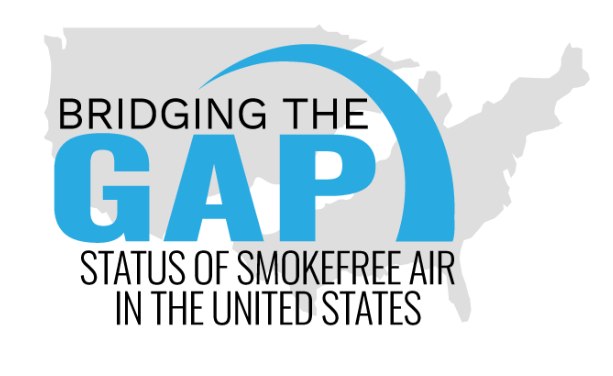86.6% of the population is not protected from secondhand smoke in workplaces.
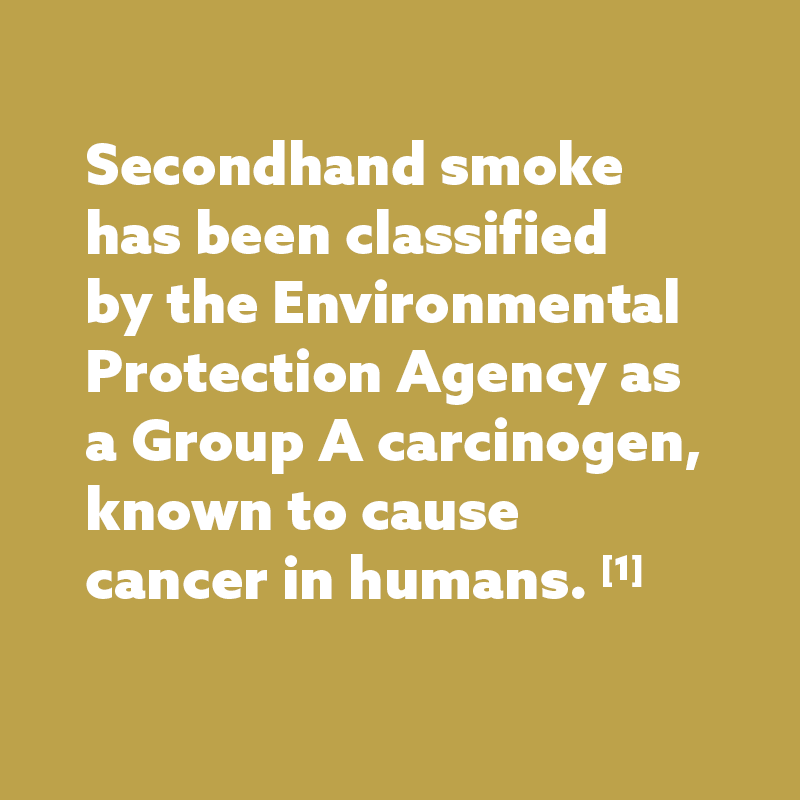
- 62.3% of Americans enjoy comprehensive smokefree protections in all public places and workplaces, including restaurants and bars.
- Only 13.4% of the population in Alabama is protected by this type of smokefree law in 33 municipalities. [2]
- Alabama is one of the least healthy states in the nation, ranking 45th out of the 50 states and 37th for Non-smoking Regulations. [3]
- Despite challenges, encouraging trends and developing strategies can help close the gaps in protections.
Preemption Status:
Not Preempted
State law does not preempt local governments from adopting smokefree air laws. Preemption refers to situations in which a law passed by a higher level of government takes precedence over a law passed by a lower one. In such cases, preemptive state laws set a ceiling, rather than a floor, and do not allow local authorities to enact strong local laws.
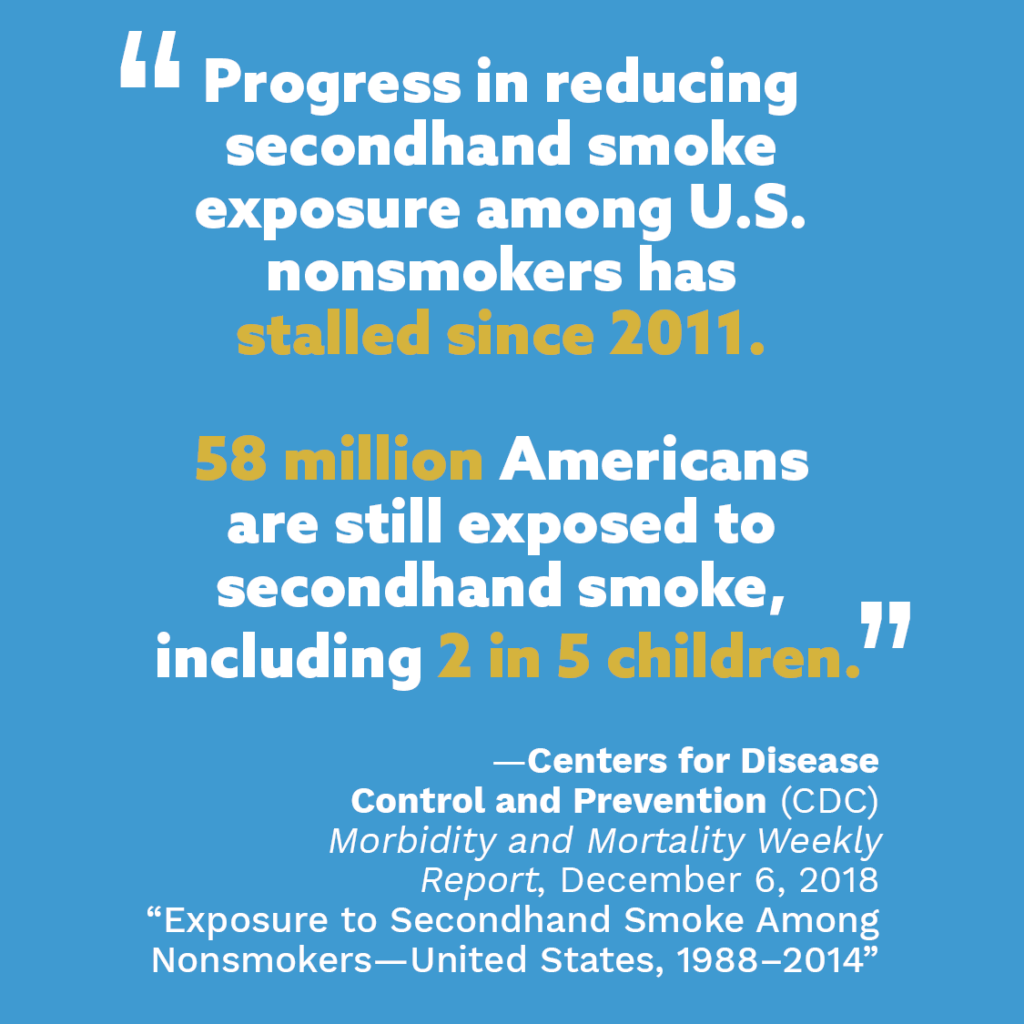
Alabama is failing to protect nonsmokers from secondhand smoke in public places and workplaces.
Current Landscape of Smokefree Protections
100% Smokefree Workplace, Restaurant, and Bar Laws, as of December 2022 [2]
Click on any star for city name.
To see additional smokefree laws, visit our list.
As one of the nation’s least healthy states, Alabamians stand to benefit greatly from strong smokefree protections. Unfortunately, the state lags behind the rest of the nation in protecting its citizens from secondhand smoke exposure. A weak statewide law passed in 2003 serves as a smokescreen of protections – providing little to no protections for the states’ nearly 5 million citizens. Essentially, the Alabama Clean Indoor Air Act of 2003 is a choice law, putting in writing what employers already knew – that they have the option to protect their employees and patrons from secondhand smoke. The state law encourages employers to adopt a smokefree policy, leaving millions of Alabama workers, residents, and visitors vulnerable to exposure.
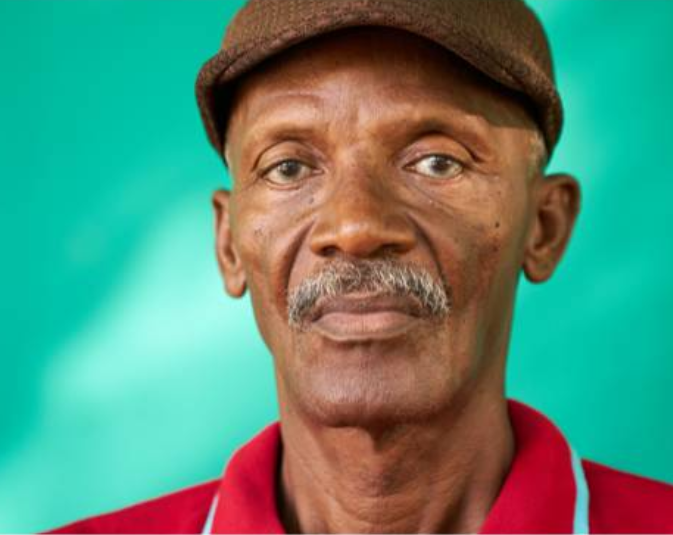
Those most likely to be exposed to secondhand smoke work in the hospitality industry and are more likely to identify as a racial minority.
What was once a hotbed for strong local ordinances, progress has nearly stalled in Alabama. The most notable victories in the past decade have been Birmingham (2012) and a hard-earned (and defended) win in Sheffield (2018). Major municipalities including Montgomery (state capital), Mobile, Huntsville, and Tuscaloosa still lag far behind. As the state legislature continues to obfuscate its responsibility to provide protections from secondhand smoke exposure, localities have the opportunity to lead the way by advocating for strong policies that close the gaps and protect the more than 85% of state’s population, including thousands of vulnerable hospitality and service-industry workers who are over-exposed and under-protected.

Poor Health Outcomes and High Costs
Alabama ranks among the top 10 highest rates of smoking in the United States with an adult smoking rate of 18.5% compared to 15.5% nationally (America’s Health Rankings, 2021). Youth tobacco use rates are also of concern with a high school smoking rate of 7.1% compared to 4.6% nationally (Source: CDC STATE System) The toll for Alabamian’s persistently high tobacco usage is staggering. Annual health care costs directly caused by smoking at nearly $2 billion with over $280 million in Medicaid expenditures (Source: CDC STATE System). Secondhand smoke exposure causes heart disease, stroke, and lung cancer among adults, as well as respiratory disease, ear infections, sudden infant death syndrome, more severe and frequent asthma attacks, and slowed lung growth in children. (Source: USDHSS).
who is left behind
Despite some leadership at the local level, Alabama is failing to protect nonsmokers from secondhand smoke in public places and workplaces, especially vulnerable populations that face numerous social and economic challenges. Allowing smoking in workplaces, restaurants, and bars is not only leaving millions of people exposed to the hazardous chemicals in secondhand smoke, but it also normalizes the act of smoking in public. Thousands of workers continue to be exposed to secondhand smoke in places of employment, including restaurants and bars.
Public health and economic inequities continue to burden Alabama’s most vulnerable communities who lack of access to care or healthcare coverage, endure high rates of poverty, and are denied protections from secondhand smoke exposure. Nearly 10% of the Alabama population lacks health insurance. (Kaiser, 2019) The poverty rate is higher than the national average for nearly all ethnics groups in Alabama, but it is especially high for African Americans and Hispanics. With poor health coverage and few resources for out-of-pocket medical expenses, chronic illnesses continue to take a toll on Alabama’s most vulnerable citizens. Secondhand smoke exposure is a risk factor for 4 of the 5 leading causes of death for Alabamians – heart disease, cancer, chronic respiratory disease, and stroke.
Smokefree laws help to reduce adult smoking prevalence and prevent youth and young adult smoking initiation. (Source: USDHSS)
Thousands of workers continue to be exposed to secondhand smoke in places of employment, including restaurants and bars.
Gaming in alabama
There are at least 10 gaming establishments in Alabama, and only four are 100% smokefree. Casinos, race tracks and other gaming establishments are workplaces as well as public places and should also be smokefree. In response to the COVID-19 pandemic, the Poarch Band of Creek Indians implemented 100% smokefree indoor air policies for the Tribe’s sovereign and state regulated gaming venues in Alabama: Mobile Greyhound Park, Wind Creek Atmore, Wind Creek Montgomery, Wind Creek Wetumpka. See ANR Foundation’s Smokefree Casino and Gaming Property Directory page for Alabama.
First of its kind study demonstrates that casino visitors, even current smokers, desire smokefree spaces.
“When smoking is allowed in indoor areas of casinos, millions of nonsmoking casino visitors and hundreds of thousands of employees can be involuntarily exposed to secondhand smoke and related toxicants. [12]
—Office on Smoking and Health, Centers for Disease Control and Prevention
A recent study found that 75% of U.S. adults who visit casinos favor smokefree casinos.
No prior studies have exclusively assessed adult attitudes toward smokefree casinos in the United States.
This study found very high favorability among those age >64 (81.6 %), college educated (81.7%), and higher income (79.1/80.8%). Smokers made up 13% of the sample, and, of those smokers, nearly half (45%) supported smokefree casinos. [12]
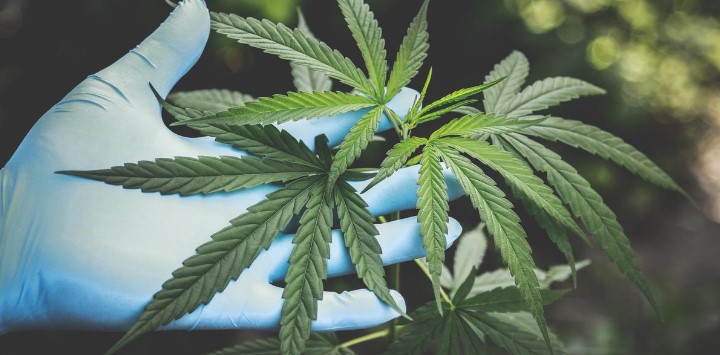
New Potential Challenge: Secondhand Marijuana Smoke
Secondhand marijuana smoke is a health hazard for nonsmokers. Just like secondhand tobacco smoke, marijuana smoke is a potent source of PM 2.5 fine particulate matter. Marijuana secondhand smoke impacts cardiovascular function; it contains thousands of chemicals and at least 33 carcinogens.
In 2021, the Alabama legislature passed a medical marijuana bill and established the Alabama Medical Cannabis Commission. To date, dispensaries have yet to be approved and no medical cannabis products are available in the state. (Source: https://amcc.alabama.gov)
In those states that have legalized recreational use of marijuana, all of them first adopted medical marijuana legalization laws. The timeframe between legalizing medical to recreational use has been dramatically reduced; therefore, it is entirely possible that Alabama could legalize some form of marijuana in the next year or so.
COVID Reminds Us That Health Promotion Policies Matter
Smoking and vaping, along with exposure to secondhand smoke and aerosols, negatively impact the respiratory system and may cause a person’s immune system to not function properly, known as being immunocompromised. Research demonstrates that current and former smokers of any age are at higher risk of severe illness from coronavirus disease (COVID) in part due to compromised immune and/or respiratory systems. Smoking leads to cardiovascular disease, as well as respiratory illnesses including bronchitis, asthma, Chronic Obstructive Pulmonary Disease (COPD), and lung cancer as a result of exposure to particulate matter, toxins, and carcinogens into their lungs. Secondhand tobacco and marijuana smoke and aerosol contain many of the same toxins, carcinogens, and particulate matter that lead to respiratory and cardiovascular diseases.
Removing masks to smoke or vape indoors undermines the proven benefit of face coverings and increases the risk of transmitting or inhaling COVID via infectious respiratory droplets, uncovered coughs, and increased touching of faces. Preventing exposure to secondhand smoke and e-cigarette aerosol or vape by adopting a smokefree policy with no smoking or vaping indoors and moving smoking or vaping to socially distanced outdoor areas away from entrances, could help mitigate worker and public exposure to carcinogens and toxins, as well as COVID.
Just as social distancing and handwashing help prevent the spread of disease, eliminating secondhand smoke is critical to prevent acute and chronic diseases, and saves lives by reducing the risk of heart disease, stroke, respiratory diseases, and lung cancer by up to 30% at a population wide level.
Going smokefree prevents exposure to the carcinogens and toxins in secondhand tobacco and marijuana smoke as well as dramatically reduces the spread of respiratory droplets that could transmit flu and other viruses like COVID.
Strategies to Close Gaps & Increase Health Equity
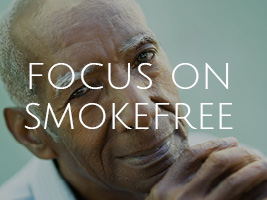
Focus on 100% smokefree policies: Competing issues can distract and delay work on smokefree policies. Smokefree laws have immediate and long-term health and economic benefits, and they are worth the investment of time and effort to protect everyone from exposure to a known human carcinogen. (Source: USDHSS, 50 Year Surgeon General Report)

Let local lead the way: Since Alabama municipalities have the authority to adopt local laws, communities should focus on passing strong laws covering all workplaces, restaurants and bars. Local control and increasing civic engagement is at the heart of our broader goal of educating the public about the health effects caused by secondhand smoke and changing attitudes regarding smoking in ways that harm other people. Smokefree laws should also prohibit the use of electronic cigarettes (e-cigarettes), marijuana, and hookah to prevent secondhand smoke exposure to the toxins, carcinogens, fine particles, and volatile organic compounds that have been found to compromise respiratory and cardiovascular health. (Source: Grana/Benowitz & Glantz, Villarreal)

Plan for a statewide smokefree law: With nearly a quarter of state’s population residing in a rural area, a strong statewide law is the only way to ensure that every Alabama citizen is equally protected from secondhand smoke exposure in workplaces and public places. Statewide campaigns are always a challenge. Further investment is necessary to build a strategic and coordinated infrastructure of advocates that support smokefree policy change and recruit strong policy champions to move forward in closing gaps.

Invest in the future: In order to address gaps in smokefree coverage, a great deal of effort and financial resources will be required to explain the ongoing disparities in smokefree protections and the benefits of 100% smokefree environments, and to counter misinformation from the tobacco industry about the necessity of compromise in the appropriate role of government in providing smokefree workplaces to protect all employees and patrons. Collaborating with and mobilizing additional community-based partners who represent workers being left behind is critical to reach success.

Increase funding and resources: Tobacco prevention, education, training, and cessation funds are needed to better address disparities in smoking and exposure to secondhand smoke. In addition, funds to support the implementation of a statewide law are critical to increase community awareness of and compliance with the smokefree rules. The American Nonsmokers’ Rights Foundation is dedicated to improving community health and increasing health equity by ensuring that everyone is protected by a 100% smokefree law. We provide training, technical assistance, and tobacco policy surveillance data for civic engagement to improve community health.
Sources of Data:
1. “U.S. Environmental Protection Agency, Respiratory Health Effects of Passive Smoking: Lung Cancer and Other Disorders,” EPA/600/6-90/006F, December 1992.
2. American Nonsmokers’ Rights Foundation. (2022). U.S. Tobacco Control Laws Database. Berkeley, CA.
3. United Health Foundation. (2021). America’s Health Rankings Annual Report
Centers for Disease Control. (2017.) Current Cigarette Use Among Youth (Youth Risk Behavior Surveillance System)
Centers for Disease Control (n.d.) State Highlights: Alabama. STATE Tobacco Activities Tracking and Evaluation System.
US Department of Health and Human Services. The health consequences of smoking: 50 years of progress. A report of the Surgeon General. Atlanta, GA: US Department of Health and Human Services, CDC; 2014.
US Department of Health and Human Services. Preventing tobacco use among youth and young adults. A report of the Surgeon General. Atlanta, GA: US Department of Health and Human Services, CDC; 2012.
Grana, R; Benowitz, N; Glantz, S. “Background Paper on E-cigarettes” Center for Tobacco Control Research and Education, University of California, San Francisco and WHO Collaborating Center on Tobacco Control. December 2013.
Williams, M.; Villarreal, A.; Bozhilov, K.; Lin, S.; Talbot, P., “Metal and silicate particles including nanoparticles are present in electronic cigarette cartomizer fluid and aerosol” PLoS ONE 8(3): e57987, March 20, 2013.
Related Reading:
https://no-smoke.org/respiratory-risk-factors-covid-19/
Huang, J., King, B.A., Babb, S.D., Xu, X., Hallett, C., Hopkins, M. (2015). Socio-demographic disparities in local smoke-free law coverage in 10 states. American Journal of Public Health, 105(9), 1806–1813.
Tynan, M.A., Baker Holmes, C., Promoff, G., Hallett, C., Hopkins, M., & Frick, B. (2016). State and local comprehensive smoke-free laws for worksites, restaurants, and bars — United States, 2015. Morbidity and Mortality Weekly Report, 65(24), 623-626.
American Gaming Association. (September 2018). State of the States: The AGA Survey of the Casino Industry.
[n.a.], “Tobacco industry interference with tobacco control,” Geneva: World Health Organization (WHO), 2008.
NCI Monograph 17: Evaluating ASSIST – A Blueprint for Understanding State-level Tobacco Control Evaluation of American Stop Smoking Intervention Study for Cancer Prevention Chapter 8, Evaluating Tobacco Industry Tactics as a Counterforce to ASSIST (October 2006).
July 2022

